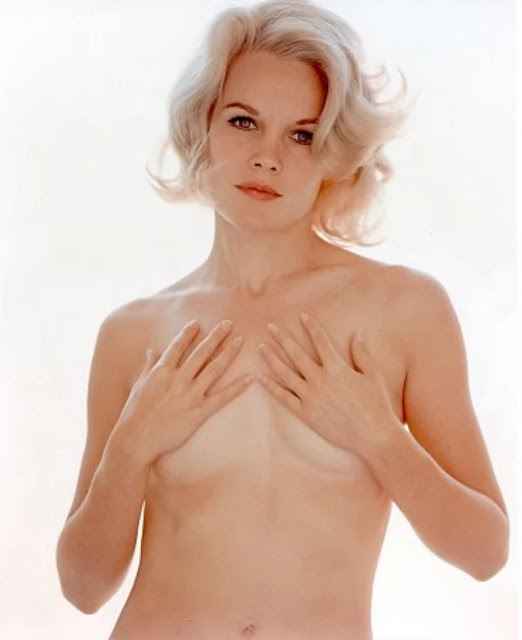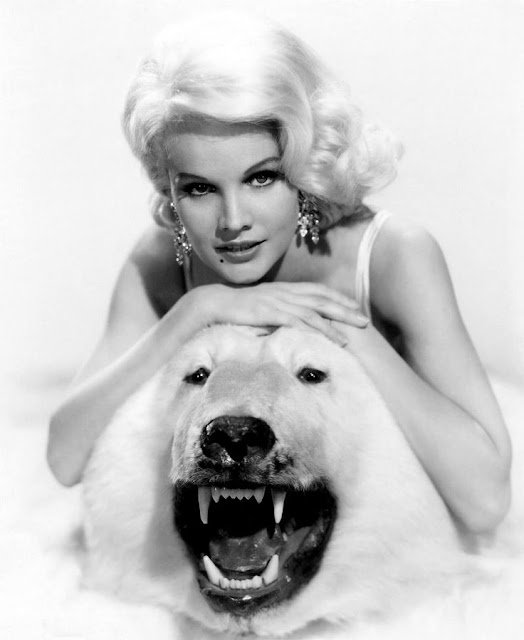
Saturday, 26 September 2020
Reflections on ... Wild is the Wind (1957)

Sunday, 20 September 2020
Reflections on ... Satan's Triangle (1975)
I am unrepentantly garrulous about my obsession with the Sam Pancake Presents the Monday Afternoon Movie podcast, in which our effervescent host forensically (and hilariously) analyzes the realm of kitsch unloved made-for-TV movies from the seventies and eighties.
In his latest installment Pancake has exhumed a true gem: ABC TV-Movie of the Week Satan’s Triangle (1975). For connoisseurs of made-for-TV flicks, this supernatural horror thriller genuinely qualifies as a cult film. All children of the seventies remember Satan’s Triangle! I would have caught a repeat of this one on Canadian TV some afternoon when I was in my early teens. It comprehensively blew my mind and haunted my imagination ever since.
And then Satan’s Triangle vanished into the ether. Perhaps unsurprisingly, it never received an official release on home video or DVD (made-for-TV movies were widely perceived as disposable trash). Over the years, collectors apparently began paying top dollar for bootleg tapes. More recently, versions of Satan’s Triangle occasionally surfaced on YouTube, but they were of such poor quality they were essentially unwatchable. But – KLAXON! – there is now a pristine copy of Satan’s Triangle viewable on YouTube, so I finally got to re-visit it all these decades later. So, does Satan’s Triangle live up to the hyperbole as “one of the scariest films ever made”? Truthfully - no! But it’s still eerie, riveting and abounds with irresistible campy moments.
The synopsis on Rotten Tomatoes is nicely concise: “a mysterious woman is the sole survivor of a boat wreck caused by a sudden terrible storm off the coast of Florida.” The location is The Bermuda Triangle to be precise - aka The Devil’s Triangle aka Satan’s Triangle. (The Bermuda Triangle was a major conspiracy theory in the seventies). Hunky Doug McClure is the Coast Guard who arrives to investigate the SOS distress call. Once aboard, he discovers a battered, seemingly abandoned fishing vessel littered with corpses. But below deck he finds the only survivor: a traumatized mystery blonde (sultry screen goddess Kim Novak in a rare TV appearance. Our first glimpse of Novak is unforgettable: we only see her feline green eyes framed by shadows). Via flashbacks, Novak recounts to McClure how all the men onboard met their grisly deaths. (Note: one of the deceased is Jim Davis – Jock Ewing from Dallas!). But how reliable a narrator is she?
As ever, Novak collapses distinctions between “good” and “bad” acting.
Depending on the director and material, she can be hauntingly remote and ethereal,
or vacant, dead-eyed and catatonic. In Satan’s Triangle Novak alternates
between both – but is always compelling to watch. And her early seventies look
is fierce: heavy dark eye make-up, a pale frosted “nude lip” and a long blonde Dynel
wiglet (it resembles Barbie doll hair) secured with a headscarf (think Valerie
Harper as Rhoda in early episodes of The Mary Tyler Moore Show). But seriously:
it’s easy and fun to mock certain aspects of Satan’s Triangle (the
marlin-fishing scene with the stock footage rivals the one in The Flame of the Islands (1956)!), but the last ten-minutes will
leave you gasping. No spoilers, but towards the end there is a jump cut to a
close-up of a character grinning maniacally that will give you goose bumps!
Listen to Sam Pancake's podcast here. (Just wait until you hear his Whisperin' Kim Novak impersonation!).
Watch Satan's Triangle here:
Thursday, 17 September 2020
Reflections on … Harlow (1965)
Make no mistake: as a truthful biopic, the infamous, ultra-trashy 1965 film Harlow is entirely misbegotten. But as a prime exemplar of the so-bad-it’s-fabulous camp classic, Harlow - directed by Gordon Douglas, adapted from Irving Shulman's scurrilous best-selling (and widely discredited) 1964 exposé Harlow: an Intimate Biography and starring Carroll Baker as doomed platinum blonde depression-era sex goddess Jean Harlow - belongs in the elite canon alongside Valley of the Dolls (1967), Diana Ross’ Mahogany (1974) and Mommie Dearest (1981). In fact, Harlow contains the essential components we demand in any film-making endeavor: emotions. Conflicts. Wigs!
/ A portrait of the real Jean Harlow (born Harlean Harlow Carpenter, 3 March 1911 - 7 June 1937) in 1933 /
/ Intriguingly, if you do a deep Google Image search you'll eventually come across these pics of Baker as Harlow (presumably hair and make-up tests?) that suggest initially the makers of Harlow contemplated a more authentic look - and then decided against it /
Baker also frequently looks gaunt and wan in Harlow, and so ravaged that it’s startling when Harlow’s mother must co-sign her studio contract because she’s meant to be a minor. (The film is studious to never specify what year it is or the characters’ ages). Certainly, Baker’s make-up, wig and lighting are surprisingly harsh and unflattering. But by all accounts, she was also stressed and miserable during the production (the script was still being cobbled-together during filming and Baker was feuding with producer Joseph E Levine). Her tension is tangible onscreen. Baker valiantly attempts to breathe some conviction into the material, considering Harlow is written as a one-note victim. (What counts for character development here: once Harlow becomes famous, she begins smoking with a long white cigarette holder).
/ A portrait of Baker around the time of Baby Doll (1956) /
And yet she subsequently wound-up starring in mostly tepidly received dross. (Although I treasure both Something Wild (1961) and Sylvia (1965)). Interestingly, the role of “Maggie the Cat” in the 1958 film version of Tennessee Williams’ play Cat on a Hot Tin Roof was reportedly offered to Baker before Elizabeth Taylor. (Contract disputes with Warner Bros meant she couldn’t accept it). Maybe that part would have altered Baker’s trajectory?
/ Baker wore this understated ensemble (worthy of Jayne Mansfield!) to promote her "comeback" film The Carpetbaggers /
/ Baker's intriguing Italian filmography is ripe for discovery and should most definitely not be regarded as a "step down" for her. Her giallo films aren't easy to see: they sometimes crop up on YouTube, but usually sans English subtitles or dubbing! The only one I've seen to date is the extremely stylish Baba Yaga (aka Kiss Me, Kill Me) from 1973 (pictured). Baker is utterly magnetic as the enigmatic lesbian villainess. Read more about Baker's Italian era here. /
/ Above: Carol Lynley in the rival biopic Harlow (1965) /
/ Jack Harrison and Jean Harlow arriving at a premiere /
Saturday, 12 September 2020
Reflections on ... The Female Animal (1958)
"Hedy Lamarr underscored her own decline by appearing as an aging movie star in Universal's tacky The Female Animal. Another refugee from the greener pastures of MGM, Jane Powell, played her daughter. The screenplay called for the two women to clash over stud George Nader."
From the book Flesh and Fantasy (1978) by Penny Stalling
Recently watched: The Female Animal (1958). Tagline: “It is said that when a woman fights for a man, she is like an animal!” I’m using this period of enforced social isolation to explore the weirder corners of YouTube for long forgotten and obscure movies. (My boyfriend Pal is accompanying me only semi-willingly).
For her final cinematic appearance, 44-year old Austrian-born glamour girl Hedy Lamarr bowed-out ignominiously with this tawdry behind-the-scenes exposé that purports to rip the lid off the Hollywood glamour jungle. Lamarr plays dissolute middle-aged movie queen Vanessa Windsor, who finds herself vying with her own wayward daughter Vanessa (Jane Powell) when they both fall for impressively buff film extra and wannabe actor, Chris Farley (hunky prime beefcake George Nader).
In her thirties and forties heyday the exquisite but inexpressive Lamarr was frequently a bit frosty, stiff and dead-behind-the-eyes onscreen. In her last film, she abruptly changes tack and gives a bizarre, brittle what-the-hell-performance, suddenly so “loose” she seems constantly tipsy. As the troubled, neglected and alcoholic daughter Powell is pure nails-on-a-blackboard - was she meant to be quite this shrill and unappealing? (The age difference between Lamarr and Powell, by the way, was only 14 years. No wonder they never convince as mother and daughter).
/ Jane Powell, Hedy Lamarr and Jan Starling in The Female Animal (1958) /
Vanessa’s kept boy Chris, meanwhile, frets about becoming “a tramp.” (The scene where Vanessa buys him a new wardrobe of expensive suits evokes Gloria Swanson and William Holden in Sunset Boulevard). The Female Animal does have its compensations, though. The action pings between Vanessa’s Bel Air mansion and Malibu beach house hideaway, and both are gorgeous. Nader wasn’t the most charismatic of actors, but the film offers a nice celebration of his impressively chiseled and sinewy physique. There are countless opportunities to contemplate him shirtless, in swimming trunks or tight jeans. I’m not making assumptions about the preferences of director Harry Keller, but when it comes to filming Nader, he has what we’d now call a “queer eye” and for that let’s be grateful. (A discretely gay actor in the uptight fifties, Nader is more interesting off-screen then he was on: he lived with the same male partner for decades and was a life-long confidant of Rock Hudson’s).
And the dialogue is juicily campy. As the original NY Times film critic noted in 1958, “far and away the best thing about Mr Zugsmith's production is the jaded ugliness and brisk carnality of the chatter.” He almost certainly means Jan Starling, who steals the entire film as Lily Frane, a former child star, now an embittered adult has-been. "I was the first child star ever to be chased around a desk!" she worryingly declares at one point. (Hashtag Me Too!). Hungrily eyeing Chris and comparing him to her own gigolo escort, she purrs, "I adore the clean-limbed American type too but somehow I always end up with veal scallopini and sideburns.” Starling's comedic performance alone makes The Female Animal worth catching. Funniest line: Vanessa impulsively proposes marriage to Chris, then rushes for the telephone to alert the gossip columnists. “This story, I think, should go to Hedda!”
Watch The Female Animal below:
Saturday, 5 September 2020
Reflections on ... Oy Vey! My Son is Gay! (2009)
Recently watched: my boyfriend Pal and I cringed our way through ultra-hackneyed romantic screwball comedy Oy Vey! My Son Is Gay! (2009). IMDb synopsis: “Every Friday night Shirley invites another "perfect" woman for Shabbat dinner in hopes that her son, Nelson, will marry a nice Jewish girl. Nelson, however, has something to tell them...he's gay.”
Anyway, just when you think the worst is over, Lulu (!) caterwauls the theme song “The Word is Love” over the closing credits. Oy Vey offers wacky misunderstandings, laughs, tears, hugs – and rest assured heartwarming life lessons are learned along the way! If you still want to watch it, Oy Vey is free – as it should be! - on Amazon Prime. Apparently, it’s viewable on YouTube, too. (Thanks to columnist Michael Musto for recommending this monstrosity. Musto also recommended Disco Godfather recently. He never steers me wrong!).



























































